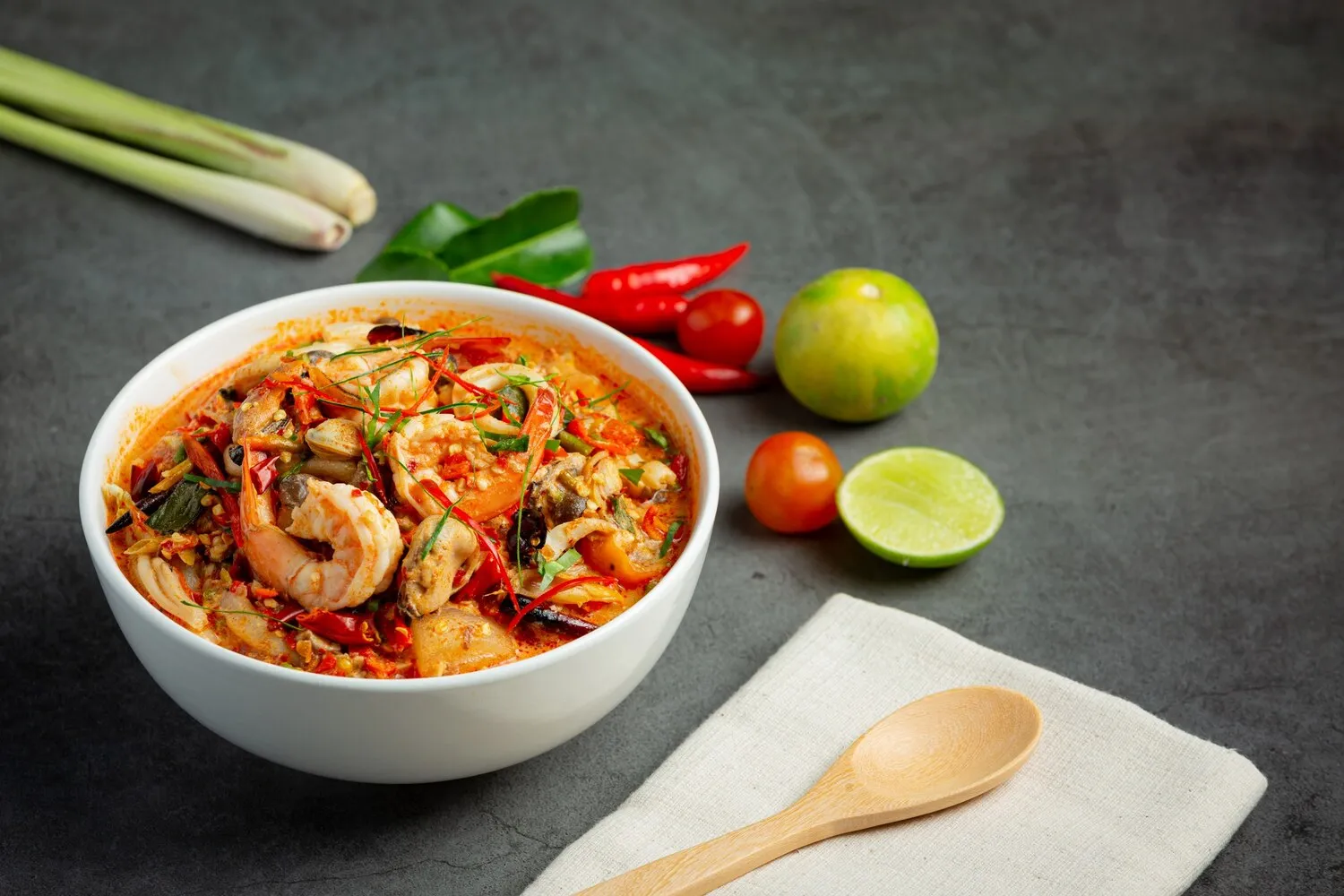
Soupe du jour
Soup of the day, selection varies daily.
Nutrition Facts
* The % Daily Value (DV) tells you how much a nutrient in a serving of food contributes to a daily diet. 2,000 calories a day is used for general nutrition advice.
Soup has been a fundamental part of the human diet since ancient times, with evidence of broth-like dishes dating back millennia. The 'soup of the day' concept is a more modern adaptation, likely arising in restaurants and cafes as a way to utilize seasonal ingredients, reduce food waste, and offer variety to customers. It represents a pragmatic and resourceful approach to cooking.
The 'soup of the day' is less about a specific cultural dish and more about a cultural approach to cooking and eating. It embodies principles of seasonality, resourcefulness, and culinary creativity.
Seasonality and Freshness
Emphasizes using ingredients that are in season, providing a fresher and more flavorful dining experience. Also aligns with seasonal eating trends.
Reducing Food Waste
Utilizing leftover ingredients helps minimize waste and promotes sustainable practices in the kitchen.
Culinary Creativity
Offers chefs the freedom to experiment with flavors and showcase their culinary skills, creating unique and interesting soup variations.
Accessibility and Affordability
Often a budget-friendly option on a restaurant menu, making it an accessible choice for a variety of customers. It allows for the showcasing of cost-effective and flavorful meals.
The flavors of 'soupe du jour' are incredibly diverse, changing daily depending on the ingredients available and the chef's inspiration. It can range from light and refreshing to rich and hearty.
The specific flavors will vary widely based on the ingredients used. Common examples include creamy tomato soup (sweet, acidic, and rich), hearty vegetable soup (earthy, savory, and slightly sweet), French onion soup (sweet, savory, and umami-rich), chicken noodle soup (savory, comforting, and subtly sweet), and lentil soup (earthy, hearty, and slightly spicy). The dish is only limited by imagination and resources.
Building Flavor
Sautéing aromatic vegetables like onions, garlic, and celery at the beginning of the cooking process creates a flavorful base for the soup. Consider using a mirepoix, soffritto or holy trinity as a foundation.
Broth Selection
Choosing the right broth (vegetable, chicken, beef, etc.) can significantly impact the overall flavor of the soup. Homemade broth often tastes best, but high-quality store-bought options are also available.
Seasoning
Taste the soup frequently during the cooking process and adjust the seasoning as needed. Salt, pepper, herbs, and spices can all be used to enhance the flavor.
Texture
Consider the desired texture of the soup. Pureeing some or all of the ingredients can create a creamy consistency, while leaving them chunky provides more substance.
Garnishes
Garnishes can add visual appeal and enhance the flavor of the soup. Common garnishes include fresh herbs, croutons, a dollop of sour cream or yogurt, or a drizzle of olive oil.
Explore additional Soup dishes and restaurants
Explore SoupDiscover top dining spots and culinary experiences in Namur.
Explore NamurLearn more about the food culture, restaurant scene, and culinary heritage of Belgium.
Explore Belgium